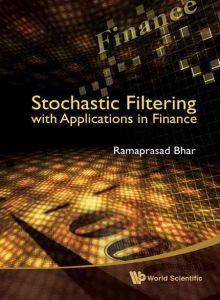Stochastic Filtering with Applications in Finance
Bhar, Ramaprasad
Éditeur : WORLD SCIENTIFIC PUBLISHING
ISBN papier: 9789814304856
Parution : 2010
Code produit : 1135924
Catégorisation :
Livres /
Science /
Mathématique /
Actuariat et mathématiques financières
Formats disponibles
| Format | Qté. disp. | Prix* | Commander |
|---|---|---|---|
| Livre papier | En rupture de stock** |
Prix membre : 105,93 $ Prix non-membre : 111,50 $ |
*Les prix sont en dollars canadien. Taxes et frais de livraison en sus.
**Ce produits est en rupture de stock mais sera expédié dès qu'ils sera disponible.
Description
This book provides a comprehensive account of stochastic filtering as a modeling tool in finance and economics. It aims to present this very important tool with a view to making it more popular among researchers in the disciplines of finance and economics. It is not intended to give a complete mathematical treatment of different stochastic filtering approaches, but rather to describe them in simple terms and illustrate their application with real historical data for problems normally encountered in these disciplines. Beyond laying out the steps to be implemented, the steps are demonstrated in the context of different market segments. Although no prior knowledge in this area is required, the reader is expected to have knowledge of probability theory as well as a general mathematical aptitude. Its simple presentation of complex algorithms required to solve modeling problems in increasingly sophisticated financial markets makes this book particularly valuable as a reference for graduate students and researchers interested in the field. Furthermore, it analyses the model estimation results in the context of the market and contrasts these with contemporary research publications. It is also suitable for use as a text for graduate level courses on stochastic modeling.























